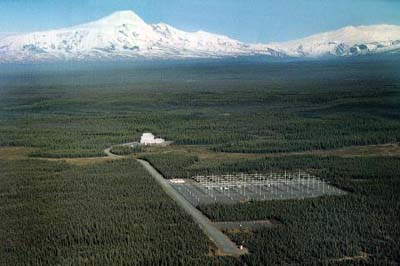US Air Force HAARP Weather Modification Facility Under New Ownership of University of Alaska

After over a year of FALSE reports that the HAARP IRI antenna array in Gakona Alaska was going to be “torn down”, after two years of reports that it was going to be “closed down”, we now have word that the facility has actually been under management by the Air Force Research Laboratories for the past 2 years.
Now, ownership will be transferred to the University of Alaska for continued research going forward. New ownership of the HAARP IRI facility goes into effect on August 11, 2015.
This new report refutes unsubstantiated reports to the effect that the HAARP Facility was slated to be “demolished”.
Mainstream media video report below:
Global Research has provided extensive coverage of the HAARP facility including its military applications.
For a review of Global Research article on HAARP click here
For a mainstream perspective, see annex below
ANNEX
News release July 14, 2015:
Alaska Military Site That Has Fueled Conspiracy Theories Will Be Transferred to Civilian Operators
“The Air Force Research Lab has control of the HAARP facility until Aug. 11,” Marmian Grimes, a university of spokesperson, wrote in an email to The Intercept. “After that, the university will have access to the site under the terms of an agreement between [University of Alaska Fairbanks] and the Air Force.
That agreement allows access for two years, which will provide the university and the Air Force time to negotiate an agreement regarding the transfer of the land.” Located on a site near the town of Gakona, Alaska, HAARP consists of 360 radio transmitters and 180 antennas, which are used to generate radio waves that heat up the ionosphere by accelerating electrons, allowing scientists to conduct experiments. When it was first conceived during the Cold War, HAARP was going to study whether currents of charged particles traveling through the ionosphere, a region of the upper atmosphere, could be used to transmit messages to nuclear submarines lurking deep underwater. When the Cold War ended, HAARP supporters offered up other uses, like examining ways to detect underground facilities in countries like North Korea. In 2002, the Pentagon grew interested in using HAARP to study ways to counter high-altitude nuclear detonations.
That plan, too, eventually fell to the wayside, and funding dried up. The Defense Department spent almost $300 million — most of it provided through congressional add-ons — over two decades to build the site, which was finally completed in 2007. Less than seven years later, the Air Force announced it would close and dismantle it. Given its seeming esoteric goal — studying the ionosphere — the facility received outsized attention from those who believed it is a classified military facility. Over the years, HAARP strove to break free of the conspiracy theories that surrounded it, even holding annual open houses for the public to allow people to view the facility. It didn’t work, and the conspiracy theories continued, including allegations that HAARP was the cause of the massive 2010 earthquake that devastated Haiti.
Last summer, the Air Force announced that it was getting ready to dismantle HAARP. The facility’s most obvious application — as a tool for scientists to study the ionosphere — wasn’t enough to attract federal funding. Physicist Dennis Papadopoulos, a professor at the University of Maryland and longtime proponent of HAARP, said the agreement that was worked out would transfer the facility from the Defense Department to the state of Alaska, and then over to the University of Alaska, which has long been involved in research at the site. HAARP will then operate, like other ionosphere research sites, as a scientific facility supported by those conducting experiments there. Papadopoulos said that the state of Alaska will put in about $2 million, and some additional funding may come from the National Science Foundation and the Pentagon.
The facility has been dormant this summer, and Papadopoulos doesn’t expect it to be operational until next spring, because of Alaska’s harsh winter. “The most important thing is the transfer,” he said, “and that is happening in August.”


